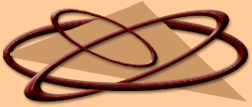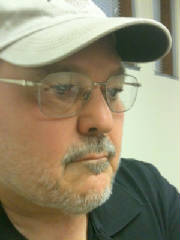The recent Ernest Hemingway documentary film by
Ken Burns and Lynn Novick may well cement the downslide of Hemingway's reputation. While he can be acknowledged as a great
writer, he came across as a vile, ugly, vain person, a failure as a human being anyone would want to emulate. When I finished
watching the three-part airing on public television, I felt revulsion and began to regret all the time I had spent over the
years reading books by and about Hemingway (which occupy an entire shelf in one of my bookcases). I know: In theory, one shouldn't
judge a writer on anything but his or her work. But this is real life and it's not that simple. What do you think?
It has been more than three years since I last posted in this blog. The election
of Donald Trump in 2016 was so dispiriting that I lost the desire to keep commenting. Unfortunately, our fears were not groundless:
Donald Trump turned out to be as bad as we thought he would be -- and much worse. So much worse.
Now, Americans have a second chance coming. Whether we can fight through the tangle of Russian meddling, Trumpist
lies, and outright Republican criminality remains to be seen. The outlook can be discouraging, to be sure. But last week I
watched the documentary "Washington" on the History Channel. Circumstances were almost hopeless when George Washington
undertook leadership of the colonial army. But prevail he and his soldiers did. The story was a reminder that things don't
always come easily (a today problem), and it was sufficient to ignite in me a tiny spark of optimism. Can we revive the spirit
and the will to win that energized our forebears?
It's going to take
everyone jumping in with both feet to beat Trump, no matter which opposition candidate we're backing right now. In the end,
I'm all in for whoever runs against the mobster whose presence is besmirching the Oval Office. I hope you will be too.
H.L. Mencken
(1880-1956), the acerbic columnist for the Baltimore Sun, was no fan of populism.
He wrote, “As democracy is perfected, the office
of president represents, more and more closely, the inner soul of the people. On some great and glorious day, the plain folks
of the land will reach their heart's desire at last and the White House will be adorned by a downright moron.”
He has now been proved right.
Mencken also wrote, “Democracy is the theory that the common
people know what they want, and deserve to get it good and hard.”
Right again, unfortunately. The American people are about to get it good and hard.
But not quite all is lost. “In this world of
sin and sorrow,” Mencken said, “there is always something to be thankful for. As for me, I rejoice that I
am not a Republican.”
Hear,
hear.
With all the ballyhoo about the return of “The X-Files” to television, I was reminded
of something odd that happened a long, long time ago (but not in a galaxy far, far away).
It was near midnight on a clear August
night in 1966 when my girlfriend and I went into the field beside her house to watch the annual Perseids meteor shower. I
was nineteen and had never seen a display quite like it before: a spectacular fusillade of shooting stars slashing across
the sky, one after another in rapid succession. The image of that night sky and the sense of awe I felt have remained vivid
all these years later.
Apart from the shooting stars, we noticed a bright pinpoint of light, moving comparatively slowly, coming up over
the horizon in front of us. It moved steadily until it appeared to be overhead. A satellite, surely; it was reminiscent of
watching Sputnik go over nearly a decade before. But the pinpoint of light stopped and seemed to hover for a just a moment.
Then it accelerated away with blazing speed off to our right. It was gone in a second or two. There seemed to be no apparent
explanation for the sudden change in speed and direction. It was puzzling.
I was working that summer as an intern at my hometown
newspaper, my first job in the news business. So the next morning I gave myself the assignment of making a call to a professor
at Penn State and asking some questions to see if I could figure out what I saw. The professor said the slower moving light
probably was in fact a satellite. He said the time and direction roughly coincided with the orbit of Echo I. If you remember,
Echo was a metallic-coated balloon one hundred feet in diameter used to bounce microwave signals off of and was, under good
conditions, visible from the ground.
But what about the way it stopped, or seemed to, and the way it did a super-fast dash out of sight?
Here’s what the professor said, and this is a direct quote because I still have a yellowing newspaper clipping of the
story I helped to write: “The account of the erratic movement can be explained by the observer looking around and taking
his eyes off the moving object and then returning them.” I didn’t remember looking away and looking back, but
certainly I could have been distracted by the ongoing meteor show. Still, I wasn’t particularly sold on the professor’s
explanation.
This little experience would have become just a transitory wisp of memory were it not for what came next.
Two more reports came
into the paper that morning. They were taken down and added to the story by a staff reporter. First, a woman who lived in
a rural, sparsely populated area well out of town claimed that what she called a UFO had loudly swooped by her home the previous
afternoon. She said the object was small, egg-shaped, and orange in color. Second was this item: “A small helicopter,
reported seen over this city and adjacent areas, landed at the airport yesterday, but its pilot and passenger did not identify
themselves, and the craft carried no identifying marks.” The story speculated as to whether the helicopter might have
somehow “sparked” the UFO report.
Here’s the bottom line for me: I can believe that mistaken observation or atmospheric
refraction or some such esoteric element could have come into play with what I saw or thought I did. I can believe that someone
not used to seeing a helicopter in her neighborhood could have excitedly misapprehended what she saw. It’s the final
item, the bit about an unmarked helicopter with unidentified occupants, in combination with the other things, that gives me
a just a little bit of pause. No markings? Really? That, indeed, would be odd. Rationally, I can’t take it any further.
Just an offbeat event that provides a little tickle of mystery. With this one, there is no conclusive truth out there. So
it just stays in my personal X-File.
© 2016 Donald C. Sarvey and Editorial Enterprises, Inc.


